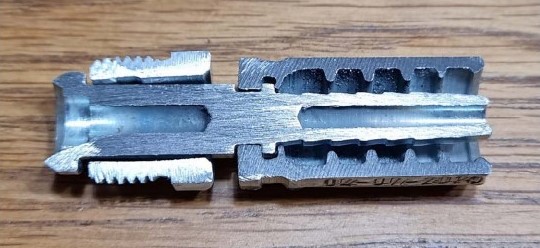According to UK MAIB initial investigation into a fire on board the ro-ro cargo ship Finnmaster while departing Hull, England, found potential manufacturing defects with pilot system hose assemblies.
The incident
On 19 September 2021, a fire broke out in the auxiliary engine room on board the Finland registered roll-on/roll-of cargo ship Finnmaster while departing Hull, England. The crew contained the fire and discharged the machinery space’s carbon dioxide (CO2) fire extinguishing system. Only half of the assigned CO2 cylinders discharged, and the crew had to re-enter the space wearing breathing apparatus to fully extinguish the fire.
Finnmaster was operated by Finnlines Oyj (Finnlines) and was equipped with a fixed high-pressure CO2 fire extinguishing system that provided protection for the ship’s machinery spaces, encompassing the main engine room and the auxiliary engine room, and the two cargo holds. The system was designed to be activated remotely via a network of pilot lines and gas activated cylinder valves.
Findings
The initial MAIB investigation identified that one of the auxiliary engine room’s CO2 system pilot hoses was completely blocked. Subsequent examination and testing of Finnmaster’s fixed fire extinguishing systems identified two other hoses on the cargo hold pilot line system that were blocked. Radiographic images taken of the blocked hoses showed that the pilot hose couplings had not been fully bored through during the manufacturing process. The testing process also identified several coupling leaks in the pilot lines.
In March 2021, the pilot hoses had been replaced during a routine service conducted on board Finnmaster by the marine fire service section of Viking Life-Saving Equipment Oy Finland (Viking). The tests carried out by Viking during the service did not identify any faults with the system. Following the accident, Viking tested the high-pressure CO2 fire extinguishing systems on board the remainder of the Finnlines feet and identified two similar pilot hoses that were blocked on one of the operator’s ships.
All the affected hose assemblies had been supplied to Viking by Geeve Hydraulics B.V. (Geeve), based in the Netherlands. The hose assemblies had been produced under the terms of the classification society type approval held by Geeve. Although the type approval required each completed hose assembly to be pressure tested, there was no specific test that gas could pass freely through the hose assemblies.
The hose used in the assemblies was provided in accordance with the type approval held by Geeve. However, Geeve had purchased the couplings from HSR Hydraulics B.V. in the Netherlands, who had sourced the couplings from a diferent manufacturer.
Safety issues
Safety issues identified during the initial stages of the investigation included:
- The quality assurance processes of the pilot hose assembly supplier did not identify that the hose couplings had not been fully bored through.
- Viking’s onboard installation testing processes did not identify both that some of the hose assemblies were blocked and that there were leaks in the CO2 system pilot lines.
Recommendations
Geeve Hydraulics B.V. is recommended to:
- Provide a copy of this safety bulletin to all customers supplied with hose assemblies fitted with couplings supplied by HSR Hydraulics B.V. that do not meet the required type approval, and draw attention to the safety issues raised and the need for immediate action to identify and rectify any defects found in safety critical systems.
- Amend its purchasing and quality control procedures to ensure that hose assembly components are procured in accordance with the relevant type approval requirements.
All companies identified as having been supplied with the affected hose assemblies by Geeve Hydraulics B.V., with couplings sourced from HSR Hydraulics B.V., are recommended to:
- Take immediate remedial action to identify and rectify any blocked pilot hose assemblies and pilot system leaks on potentially affected CO2 fire extinguishing systems.




























































